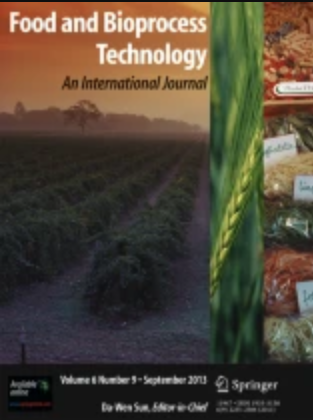Explore the Interaction Between Lotus Seedpod Procyanidins and Myofibrillar Protein to Inhibit the Adhesion of Pseudomonas fragi
Abstract
The interaction between lotus seedpod procyanidins (LSPC) and myofibrillar protein (MP) and the destructive effect of LSPC on the integrity and permeability of the Pseudomonas fragi membrane were investigated to underlying the potential mechanism of MP with LSPC against the adherence of Pseudomonas fragi. According to the results of multi-spectrums, LSPC could increase the β-sheet structure and decrease the surface hydrophobicity of MP by hydrogen bonding and hydrophobic interactions. Additionally, the results of LSPC treatment on P. fragi demonstrated that LSPC damaged and impaired the operation of the cell membrane, as confirmed by a decrease in Na+ K+-ATPase enzyme activity and the leakage of some intracellular substances (proteins, ions, and nucleic acids), as well as the scanning electron microscopy (SEM) results. It was concluded that the destructive effect of LSPC on bacterial cell membrane might lead to the malfunction of adhesion and flagella and other appendages on the cell membrane, while the change of surface hydrophobicity of MP by LSPC affected the hydrophobic interaction between bacteria and MP. These factors above ultimately led to a decline in bacterial adhesion on MP, which was confirmed by the quartz crystal microbalance with dissipation (QCM-D) results.

 求助内容:
求助内容: 应助结果提醒方式:
应助结果提醒方式:


